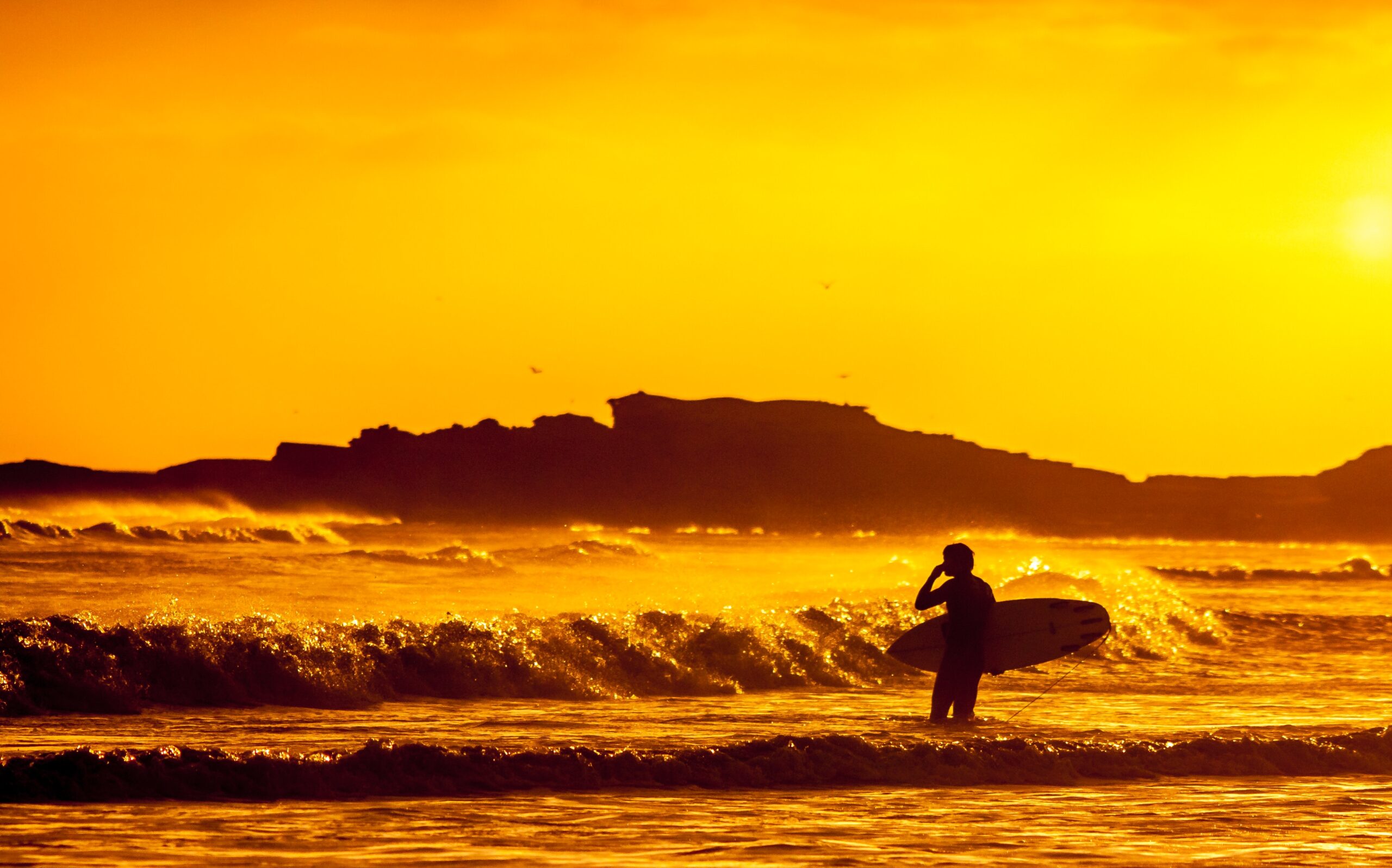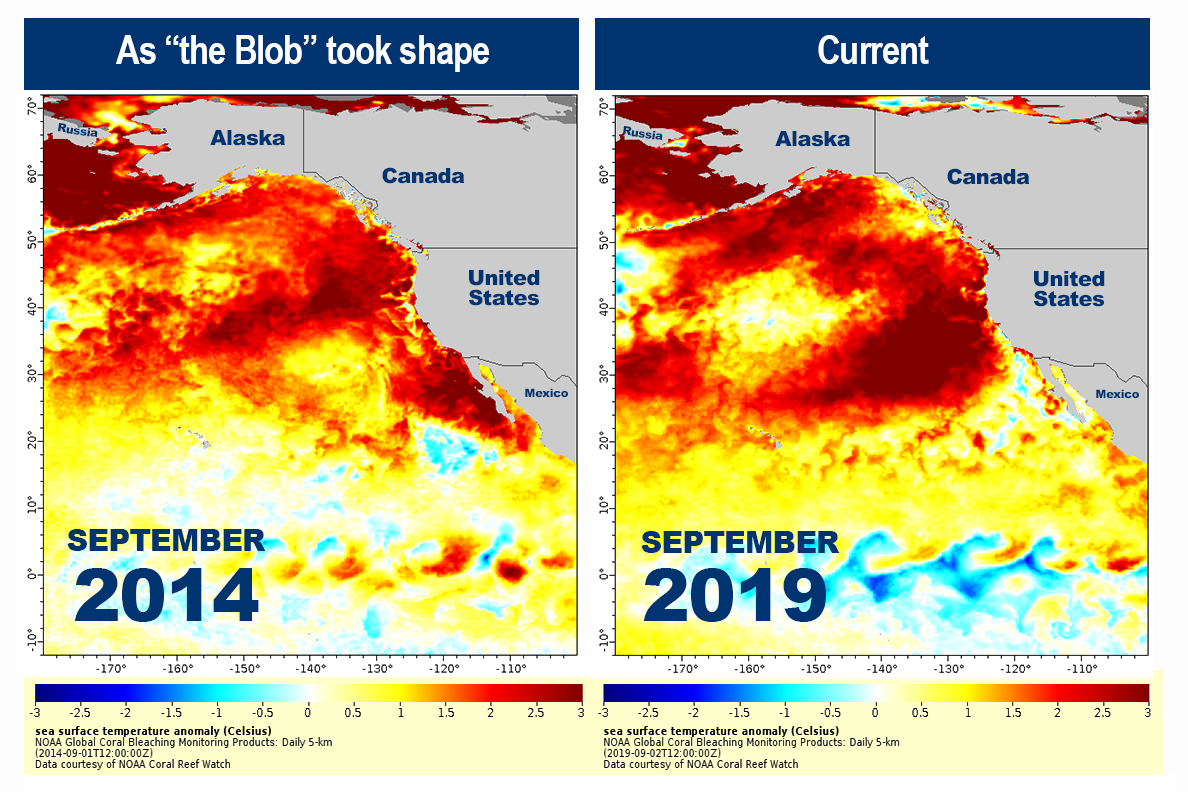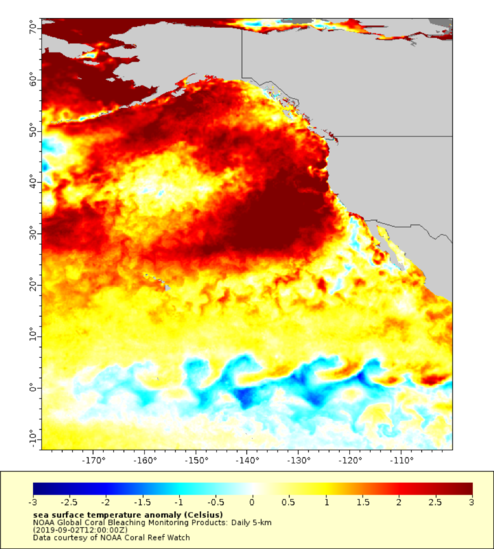What is the Pacific Warm Blob?
NOAA Fisheries announces second biggest West Coast marine heat wave

Five years ago, temperatures in the Northeast Pacific Ocean skyrocketed. The abnormally hot mass of water was dubbed the “warm blob” and fishermen and coastal communities were on the front line as the ecosystems of the West Coast rapidly changed before their eyes. The largest recorded harmful algal bloom spread across the coast, shutting down crabbing and clamming in multiple states. Fisheries for salmon in Washington, Oregon, California and Alaska and sardine in California were declared disasters, and Pacific cod vanished from the Gulf of Alaska. Sea lion pups and seabirds died from starvation. The base of the food web—phytoplankton, copepods, and krill—crumbled. Gelatinous pyrosomes—sometimes called “sea pickles”—invaded from the tropics, fouling fishing lines and buckling nets. Years later, scientists at the National Marine Fisheries Service, or NOAA Fisheries, are still working to understand the cascading effects of this event.
Over 2017 and 2018, it looked like water temperatures were returning to normal—only to be interrupted by the announcement that NOAA has detected a new and growing heat wave that looks suspiciously like the warm blob. This one isn’t yet as big as the previous wave, which occurred in 2014-2015, but is already the second largest on record and likely hasn’t grown to its full size yet. But the reoccurrence of these abnormal temperatures while the ecosystem is still recovering from the last one is worrisome news to everyone. Fishermen and fishing dependent communities are particularly vulnerable, as they rely on abundant and relatively stable ecosystems to foster healthy fish and invertebrate populations.

NOAA is working to monitor and understand the blobs and the changes they cause. Scientists collect and study long-term oceanographic and fisheries information, which allows scientists to understand trends over long periods of time, and notice and track anomalies when they happen. Oceanographic data—temperature, oxygen levels, availability of plankton, salinity, visibility—is critical to understanding the ocean, the things that live in it and the people who depend on it. These same data systems, combined with fisheries information like catch data, help manage fisheries and provide data and information about protected species like sea lions and turtles. The NOAA Integrated Ecosystem Assessment program is responsible for putting much of this data together to understand what it means across the entire ecosystem.

As the impacts of climate change extend across our ocean like soundless rogue tentacles, we are trying to outrun its lethal grip. We need to run faster. At the heart of the problem, we must reduce greenhouse gases and carbon dioxide emissions. We also have to adapt to help the ocean. Building up our monitoring capabilities is critical, as is bringing this information to our managers and policy-makers so our ocean can be climate-ready; ending global overfishing, limiting oil and gas extractions, protecting habitat and curbing pollution are all needed to ensure that our ocean is strong enough to weather a changing climate and remain productive so our suffering is limited.
The West Coast is leading the world in preparing our fisheries for climate change. Washington, Oregon and California have all taken steps to address carbon emissions, and have taken efforts to understand specifically climate change effects on fisheries. The Pacific Fishery Management Council, the group tasked with management of our federal West Coast fisheries, is working to better understand impacts and how they affect communities, so that they can take steps to keep our fisheries sustainable even under these changing conditions. The North Pacific Fishery Management Council has also initiated a process for the Bering Sea to ensure fishery management is climate-ready.
We need to do more though. As we watch the second warm blob unfold its wrath, it is time to heed its warning and move faster on what we know needs to be done. West Coast fisherman, coastal communities and the entire nation depend on it.